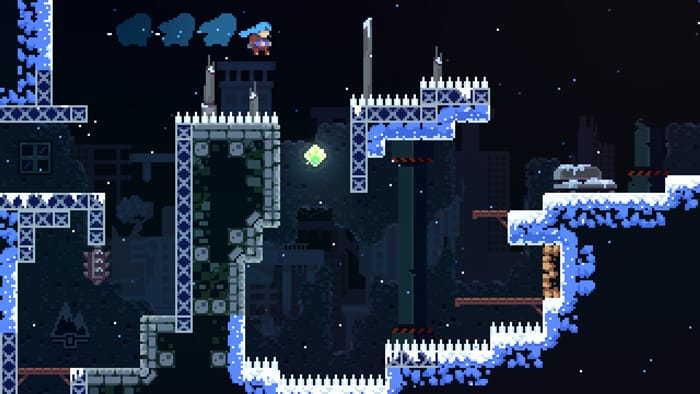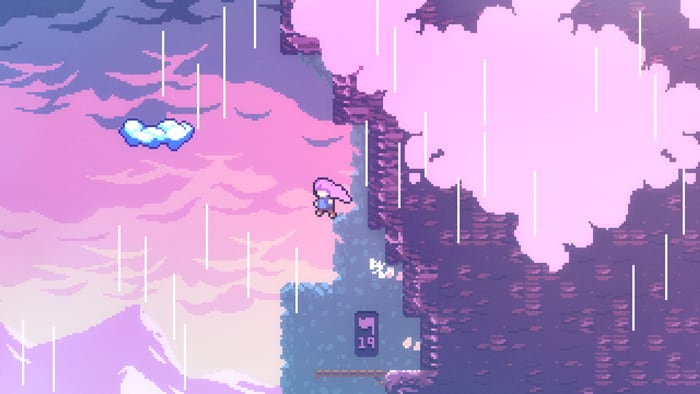Gaming the system: What video games teach us about customer experience.
10th January 2020 • 8 min read
10th January 2020 • 8 min read

The other day, I listened to an interview with video game composer Lena Raine, best known for her score for smash-hit indie game, Celeste. In the game, players control a girl named Madeline as she makes her way up a mountain, avoiding various deadly obstacles and battling her own inner demons.
BAFTA-winning composer Jessica Curry asks Raine about the interactive nature of video games, and how it influences the composer’s relationship with the player. Raine says she frequently finds herself, “Changing [a score] not because the gameplay has influenced it, but because the thought process going through your character’s head is different.” Raine sees huge potential to connect with players; she explains that, “The way in which you’re able to use interactivity to make a personalised soundtrack for the player is such a powerful thing.”
Video game composers not only have to consider the practical aspects of the gameplay, they must then layer the emotions of the character – and ultimately, the player – over the top. Both Lena Raine and Jessica Curry see themselves as responsible for building a relationship with the player as the game progresses. Raine says, “I really wanted to take the angle of being on the player’s side, being there for them.” Curry agrees, “Video game music is innately about a relationship with the player. You’re holding their hand throughout the experience, you’re a companion on their journey.”
The parallel with designing and writing for the web was striking.
“The way you’re able to use that interactivity to really make a personalised soundtrack for the player is such a powerful thing.” Lena Raine
As writers and designers, it’s our job to accompany our users on their own quest. It’s a quest to achieve a certain goal: to move towards something positive, to avoid risk or escape something unpleasant. And, if we go about things in the right way, we can make sure every interaction helps us build a relationship with our user.
When it comes to user experience (UX) and content design, we’re actually responsible for building the ‘gameplay’ which our hero experiences. And it’s clearly our responsibility to make it as straightforward, painless and even enjoyable as possible. But what about that layer of emotion? What about being a companion on the user’s journey? What about reflecting and responding to their emotions? This is when tone of voice, user interface design, interaction design and micro copy come into their own. Here we have a chance, or a series of small chances, to support and encourage our user, to colour their experience to create something that will resonate with them.
So far, so promising. The problem is that we often limit this way of thinking to software, apps and websites, treating them as a self-contained, controllable world. But an app or site is just one level that our user passes through on their journey.
In fact, the user’s journey begins long before they arrive on our site and often continues long after it. What can we do to be there for them the rest of the way?
It helps if we start thinking about the customer’s journey as if it were a platform video game, where characters have to jump and climb between suspended platforms while avoiding obstacles.

The idea of a video game as a framework for marketers might seem strange. We’re much more used to a marketing funnel or maybe a linear user journey. A platform game is both rolled together. It’s an upward journey towards a specific goal, with a series of tasks the user needs to perform and barriers they need to overcome. And, if they succeed, they move up to the next level, which we can think of as the next layer of the traditional marketing funnel.
So why a video game rather than a funnel? The key is that thinking of your customer as a video game player forces you to see them as the hero. And since we all ultimately perceive ourselves as the heroes of our own stories, it helps us align with our customer’s perspective and put them at the centre – which is something we should all be aiming for. Once you make the switch to seeing your customer as the hero and your communications as a kind of narrative, you’re much closer to building a relationship with your customer and becoming their ally.
In The Greatest Sales Deck I’ve Ever Seen, strategic consultant Andy Raskin stresses the importance of narrative when it comes to selling to your customer. “Successful sales decks follow the same narrative structure as epic films and fairy tales,” he explains. “Your prospect is Luke, and you’re Obi Wan, furnishing a lightsabre to help him defeat the Empire. Your prospect is Frodo, and you’re Gandalf, wielding wizardry to help him destroy the ring. Your prospect is Cinderella, and you’re the fairy godmother, casting spells to get her to the ball.”
Our communications need to become like a video game score, a cohesive, instantly-recognisable theme that adapts as our users move through their journey.
“Your prospect is Luke, and you’re Obi Wan, furnishing a lightsabre to help him defeat the Empire.” Andy Raskin
How to make your customer the hero of your campaign
Despite the parallels, marketing strategy is a far cry from video game design. For a start, game creators have the luxury of building their own world and characters from scratch, while we’re stuck in the real world, with real people. There’s a lot we can’t control.

The trick is to understand and respond to the things outside our control and be meticulous when it comes to deploying the things we can control. But hang on, surely there are some helpful power-ups we can collect along the way? Okay then, the territory might be treacherous, but here are a series of tools and maps you can use to guide you.
Power-up 1: Customer Experience Mapping
First, you need to understand more about your hero’s quest and Customer Experience (CX) Mapping is one way to do this. Similar to User Journey Mapping, this exercise extends far beyond your website. You’re essentially mapping your customer’s life, the things they do, how they feel, the places they go, over an extended period of time. This is your chance to understand what your customer is seeking and what you can do to help them.
Power-up 2: Empathy Mapping
Next, zero in on your customer’s emotions so that you can communicate with them in the right way at the right time. Where CX maps represent a journey through time, Empathy Maps are a snapshot of your customer’s mindset at a specific moment in time. What are they feeling? What’s influencing them? What barriers are they facing?
Power-up 3: Campaign Plan
At one point in the interview with Lena Raine, Curry asks her, “Are you thinking about the player when you’re writing?” The answer to this should always be ‘yes’. But in a complex, integrated campaign which involves lots of different people, it’s often difficult for your writers and designers to remember where their hero is up to in the game, what they’re feeling and what they need to do next. A comprehensive visual campaign plan is one way to help everyone orient themselves, and if you can weave in the emotional insight from your empathy maps, you’re giving your creatives a powerful advantage.
Power-up 4: Creative boost
Your CX map, empathy maps and campaign plan are like dynamite for your creative team. Armed with these tools, your creators will stop at nothing to be emotionally present with your customer at every stage of their journey. The result? An integrated campaign with a rich, distinctive yet varied creative thread running all the way through it. The kind of campaign that will strike a chord with your customer and resonate with them, every step of the way.
Torpedo’s planning and creative teams are here to help you find the way.
Talk to us today